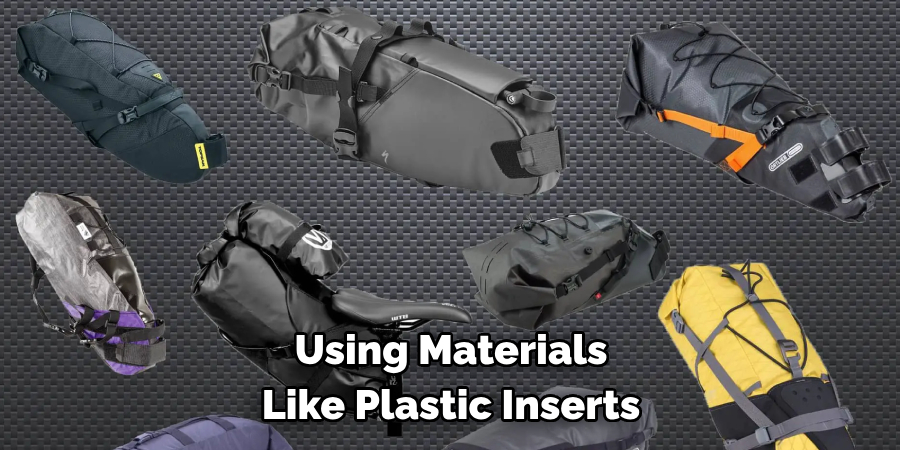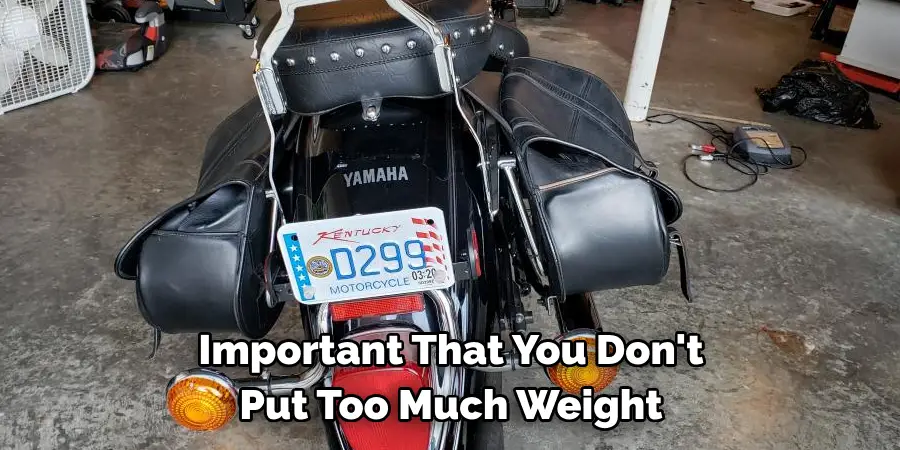Sagging saddlebags on a bike can be both an aesthetic and functional concern for riders. As the years go by and the miles accumulate, the weight of gear and the elements can take a toll on your motorcycle’s saddlebags, causing them to sag, lose their shape, or become misaligned. This not only affects the visual appeal of your bike but also compromises the storage capacity and convenience of your saddlebags.
Fortunately, there are practical steps you can take to address this issue and restore your saddlebags to their former glory. In this article, we will explore effective methods and techniques on how to fix sagging saddlebags. Whether you’re a seasoned rider or new to motorcycle maintenance, these tips will help you regain the aesthetics and functionality of your saddlebags, ensuring a smoother and more enjoyable riding experience.

Importance of Saddlebags on Motorcycles
It’s no secret that the saddlebags on a motorcycle are essential for carrying your items with you. Saddlebags play an important role in providing storage space and helping to protect your belongings while riding, but they can also be aesthetically pleasing. The right saddlebag can add a unique style and character to your bike, giving it a look all its own.
Unfortunately, over time the saddlebags on a motorcycle may start to sag. This can be caused by issues such as too much weight being placed in the bags, or simply from the straps becoming worn and broken. No matter what has caused your bike’s saddlebags to sag, there are some steps you can take to repair them.
The most common way to fix sagging saddlebags is by using a tensioner or load equalizer. This device helps to evenly distribute the weight your saddle bags are carrying, which can help reduce the amount of stress on the straps and prevent them from wearing out too quickly. It’s important to make sure you get the right size and style for your particular bike, as well as to make sure that the load equalizer you choose is strong enough to support the weight of your saddlebags.
Another way to help prevent your saddlebags from sagging is by using a support frame or bracket. These frames are specifically designed for different types and sizes of bags, and they can provide additional support when it comes to carrying heavier items in the saddlebags. The frame helps to keep the bags upright and reduces the strain on the straps, which can help them last longer.
Identifying the Cause of Sagging Saddlebags
When you notice that your saddlebags are starting to sag, it can be difficult to determine the cause. It is important to first identify why your saddlebags are sagging before attempting any kind of repair. To figure out the cause of your sagging bags, look for signs of wear and tear or damage, such as fraying fabric or broken straps. If you can’t identify the cause, it may be a good idea to take your bag in for professional repairs.

Once you have identified the cause of the sagging, there are several different ways that you can fix saddlebags that are starting to sag. If the fabric is worn or frayed, consider repairing it with patches or replacing it altogether. Seams and straps can also become worn over time, and you may need to replace them in order to give your bag the necessary support.
If the sagging is due to a lack of structure, consider adding some kind of internal structure or support. This could be done by using stiffeners like plastic or cardboard inserts, but it’s also possible to purchase prefabricated frames or structures that you can insert into the bag. This will help give your saddlebags the necessary form and support to keep them looking good.
10 Steps How to Fix Sagging Saddlebags
Step 1: Identify the Cause
Before addressing the issue, it’s crucial to determine the root cause of the sagging saddlebags. Is it due to worn-out straps, damaged brackets, or simply overloading the bags? Understanding the cause will help you choose the appropriate fix.

Step 2: Empty the Saddlebags
Start by removing all items from the saddlebags. This step is essential for accessing the bag’s interior and identifying any potential damage or wear.
Step 3: Inspect the Saddlebag Hardware
Carefully examine the hardware and mounting brackets that secure the saddlebags to your bike. Look for signs of damage, rust, or loose connections. If any hardware is worn out or damaged, consider replacing it.
Step 4: Clean and Dry the Saddlebags
Clean the exterior of the saddlebags using a mild detergent and a soft cloth. Make sure to remove any dirt, grime, or residue. Once cleaned, allow the saddlebags to dry completely to prevent moisture-related issues.
Step 5: Check the Saddlebag Straps
Inspect the straps that secure the saddlebags to the bike. Check for signs of fraying, stretching, or damage. If the straps are in poor condition, replace them with new ones to ensure a secure fit.
Step 6: Adjust the Straps
Properly adjust the straps to achieve the desired tension. The goal is to have the saddlebags securely attached to the bike without being too tight, which can cause stress on the bags and straps.
Step 7: Reinforce the Saddlebag Supports
If your saddlebags have internal supports or frames, check their condition. Sometimes, these supports can weaken or bend over time. Strengthen them by using additional support or reinforcements, such as braces or inserts, if necessary.
Step 8: Address Sagging Saddlebag Material
If the material of your saddlebags has lost its shape and is sagging, consider reshaping it. You can achieve this by using materials like plastic inserts or stiffeners that fit inside the saddlebag to provide support and structure.

Step 9: Reassemble and Load the Saddlebags
Once you’ve addressed the hardware, straps, supports, and material of the saddlebags, reassemble them, and load your gear back into the bags. Be mindful of the weight distribution to prevent excessive strain on one side.
Step 10: Regular Maintenance
To prevent future sagging issues, perform regular maintenance on your saddlebags. Clean them periodically, inspect the hardware, and check the straps for wear. Address any signs of damage promptly to prolong the life of your saddlebags.
Things to Consider When Fixing Sagging Saddlebags
The most common cause of sagging saddlebags is a lack of support structures. Without the right amount of support, your saddlebags may start to sag due to the weight they are carrying and gravity’s pull. In order to prevent this from occurring, there are several options you have at your disposal:
- Reinforcements – You can add reinforcements to your saddlebags, such as straps, buckles and snaps. This will help to keep the bags in place better and reduce any sagging or stretching.
- Load Distribution – Make sure you are distributing the weight of your load evenly between both bags. If one bag is weighed down more than the other, it can lead to uneven sagging and other issues.
- Storage Solutions – If you find that your saddlebags are sagging too much due to carrying heavier items, consider getting a storage solution such as panniers or bags designed for heavy loads. These solutions will provide additional support and help keep your saddlebags in the correct position.
- Sewing Repairs – If your saddlebags have already started to sag, you can try sewing repairs such as adding additional stitching or using stronger thread. This will help to reinforce the fabric and ensure that the bags retain their shape.
- Higher Quality – Finally, you may want to consider investing in higher quality saddlebags with better support structures built into them. This will ensure that your saddlebags remain firm and keep the weight off your shoulders.
Some Common Mistakes to Avoid When Fixing Sagging Saddlebags
When it comes to fixing sagging saddlebags, there are a few common mistakes you should avoid. One of the most important is not putting enough support behind the seat bags themselves. It’s essential that your support structure is strong enough and up to the job – otherwise, any weight placed on them can cause them to droop or collapse.
It’s also important that you don’t put too much weight on your saddlebags. While it might seem like more is better, overloading the bags can cause them to sag faster than if they were properly supported.
Finally, make sure your seat bag supports have enough cushioning to prevent the material from rubbing or tearing. If the straps are too tight for comfort, then use a thicker material or add extra padding to reduce the pressure on the seat bag.

Conclusion
All in all, learning how to fix a saggy saddlebag is not an impossible task. With the right tools, knowledge and time, you can enjoy a beautiful bike with support in all the right places. If you’re still having difficulty after trying all these tips, consider investing in a professional repair service. Whether you opt to do it yourself or call upon a professional, fixing sagging saddlebags is definitely worth your time. So if your two-wheeled best friend seems to be lacking in support lately, don’t hesitate – learn how to fix sagging saddlebags today! The world of cycling awaits! Now it’s time to get out there and explore – who knows where your bike will take you?

